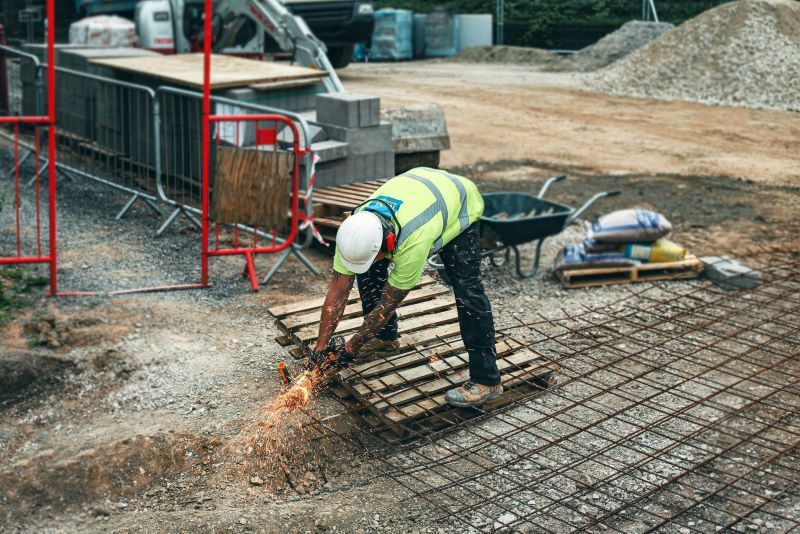The Role of Structural Engineering in Building Your Dream Home
Building your dream home is an ambitious and deeply personal endeavor. It’s a project that goes beyond mere construction; it embodies your aspirations, preferences, and vision for a perfect living space.
However, transforming this vision into a tangible reality involves a complex interplay of art, science, and technology, with structural engineering playing a pivotal role.
Structural engineering is the backbone of home construction, ensuring that your dream home is not only aesthetically pleasing but also structurally sound, safe, and durable over time.
What is Structural Engineering?
Structural engineering is a specialty within civil engineering that focuses on the framework of structures, ensuring they can withstand the stresses and pressures of their environment and remain safe, stable, and secure throughout their use.
In the context of home construction, structural engineering is paramount. It involves the analysis and design of a home’s foundation, walls, roofs, and beams—essentially, the components that contribute to its overall structural integrity.
The importance of structural engineering in the construction industry cannot be overstated, as it directly impacts a building’s ability to endure natural disasters, such as earthquakes, hurricanes, or floods, and the day-to-day loads of occupancy and use.
The main responsibilities of structural engineers in home construction encompass a broad range of tasks—from conducting soil tests and surveying the construction site to designing the structural system and selecting the appropriate construction materials.
They work closely with architects to ensure that the structural elements of the home are seamlessly integrated into the overall design, providing solutions that meet both aesthetic and functional requirements.
Engineer Types and What They Do
When it comes to building a home, a multidisciplinary team of engineers comes into play, each bringing a unique set of skills and expertise to the project. Understanding the different engineer types and what they do is crucial for anyone embarking on the home construction journey.
- Civil Engineers: Focus on the broader design and infrastructure of the project, ensuring that the home is seamlessly integrated into its surroundings.
- Mechanical Engineers: Design the heating, ventilation, and air conditioning (HVAC) systems, optimizing the home’s comfort and energy efficiency.
- Electrical Engineers: Responsible for the home’s electrical layout, ensuring safe and functional power distribution.
- Environmental Engineers: Advocate for sustainable and environmentally friendly construction practices, minimizing the home’s ecological footprint.
Among these varied engineer types, Structural Engineers stand out for their critical contributions to building safe and resilient homes. They are instrumental in:
- Designing structures that can withstand anticipated loads and forces, from the weight of the structure itself to environmental challenges like wind and seismic activity.
- Ensuring longevity and safety, making them a cornerstone in the construction of homes that not only meet but exceed regulatory standards.
- Applying a meticulous blend of technical knowledge, creative problem-solving, and precise calculation, they are indispensable in realizing the dream of a home that is both beautiful and structurally sound.
Understanding these engineer types and what they do highlights the collaborative effort required to bring your dream home from concept to reality, underscoring the indispensable role of structural engineering in this intricate process.
The Process of Structural Engineering in Home Construction
Structural engineering in home construction is a detailed and methodical process that ensures the safety, stability, and longevity of your dream home. Here’s a step-by-step overview:
- Site Analysis: The first step involves evaluating the construction site for soil quality, topography, and environmental conditions. This analysis helps in planning the foundation and structural design that best suits the location.
- Design and Planning: Structural engineers work closely with architects to develop a design that integrates structural integrity with architectural vision. This phase includes determining the layout of beams, columns, and the type of materials to be used.
- Material Selection: Choosing the right materials is crucial for durability and strength. Engineers select materials based on environmental conditions, the building’s design, and sustainability considerations.
- Implementation of Design Principles: Structural engineers apply design principles that ensure the home can withstand loads, such as the weight of the structure, wind, and seismic forces, while also considering the efficiency of space and materials.
Advancements and Innovations
Recent advancements and innovations in structural engineering have significantly enhanced home safety, efficiency, and sustainability:
- Sustainable Materials: The use of green and sustainable materials has become more prevalent, reducing environmental impact while maintaining structural integrity.
- Smart Technology: Incorporation of smart sensors into structural elements allows for real-time monitoring of a building’s condition, enabling early detection of potential issues.
- Seismic Retrofitting Techniques: Innovations in seismic design have improved the earthquake resilience of homes, particularly in prone areas.
Statistics and case studies from this year and last highlight these trends. For example, a recent case study demonstrated a 20% increase in the use of sustainable materials in home construction projects compared to the previous year, showcasing a growing commitment to environmental sustainability.
Choosing the Right Structural Engineer
Selecting the right structural engineer is critical for the success of your home construction project. Here are some guidelines:
Qualifications: Look for a licensed professional with a strong educational background in structural engineering and relevant experience in residential projects.
Portfolio and References: Review their past projects and speak with former clients to gauge their satisfaction and the engineer’s ability to deliver on similar projects.
Communication Skills: Ensure the engineer has good communication skills and is willing to collaborate closely with you and the construction team.
Final Remarks
The role of structural engineering in building your dream home is indispensable. From the initial site analysis to the final selection of materials and implementation of innovative design principles, structural engineers ensure that your vision is realized safely and sustainably.
Recent advancements in the field promise homes that are not only more efficient and resilient but also aligned with environmental values. Investing in the right structural engineering services is investing in the future of your dream home.










